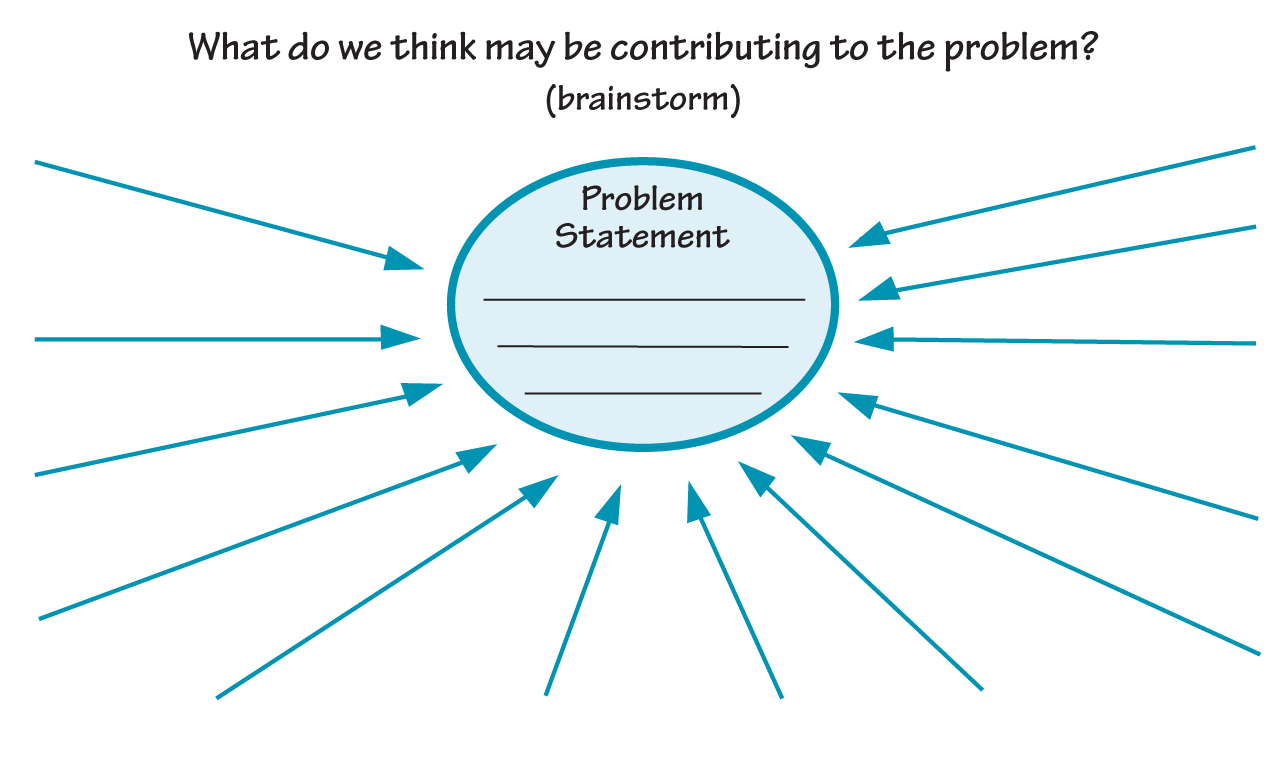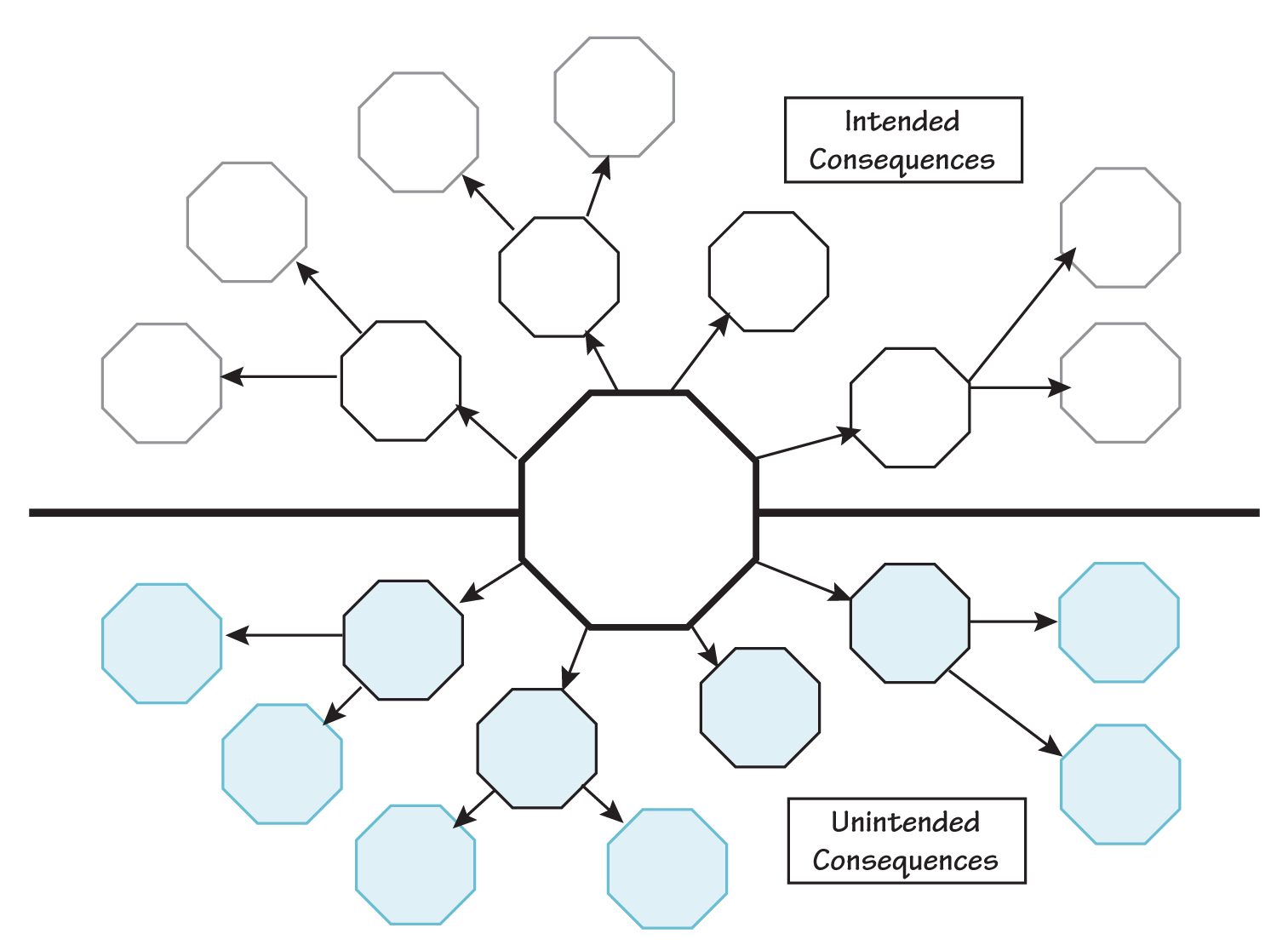We suspect that every reader of this newsletter has been steeped in articles and classes on a myriad of problem-solving techniques. We have all been exposed to techniques such as:
- GROW Model (Goal, Reality, Obstacles/Options, Way Forward)
- Decision Analysis
- Divide & Conquer
- Brainstorming
- Etc, etc, etc… ad nauseum
Unfortunately, abundant data doesn’t necessarily help leaders develop insight or see the interrelatedness of the information.
For the benefit of those who played hooky or who don’t like to read, the underlying message of problem-solving workshops and best practice articles is, ironically, that:
1, Most models do not deliver on the promise of actually solving organizational problems. 2. And the reason for this is usually not due to “operator error.”
… But I Love Models!
Although problem-solving models can be elegant in theory, they are often less helpful in practice. The linear, equation-like approach to problem solving offers hard-edge clarity and precision that is very comforting. However, with complex problems (those involving humans), models typically result in little or no lasting change to the problem.
On the plus side, the problem-solving processes have a strong focus on data gathering. Information on all the parts and pieces of a problem, and occasionally on all of the internal/external forces that impact the problem, is usually a key part of any problem-solving process.
TEAM TIP
With your team, use the tools introduced in this article to generate shared understanding of a persistent problem.
Unfortunately, abundant data doesn’t necessarily help leaders develop insight or see the interrelatedness of the information. In fact, sometimes it results in information overload and actually inhibits problem solving. But as the gambler says, “The game may be crooked but it’s the only game in town.”
At the most basic level, problem solving in an organization is about:
- Making quality decisions
- Executing effectively on those decisions
- Oh yeah, and solutions should reflect an understanding of all of the variables.
No sweat, right? Unfortunately, what seems so simple in theory is anything but in practice.
The Monkey Wrench of Problem Solving
A key condition that makes this seemingly simple and logical process of organizational problem solving so difficult is complexity.
Pardon the geeky definition, but “Complexity refers to interesting patterns and structures that arise from the dynamic interaction of independent elements”—and people are a major element!
In enterprises of any significant size, complexity is alive and well. In fact, complex organizational problems can be so dynamic and adaptive, they can feel alive. They can also feel like they are teetering on the edge of chaos and apt to spin out of control at any moment!
But We Are the Best and Brightest
There is no doubt about the amazing talent that rises to leadership positions in competitive organizations. We have the honor of working with many of the best and brightest daily.
The problem is that even the best leaders have little time for the reflection and analysis that good problem solving requires. And many have only been exposed to linear problem-solving techniques. Good stuff, but applying linear problem-solving tools to complex, dynamic problems will have you drooling on your BlackBerry® and stuttering in no time.
There is no easy fix for complex, dynamic problems. All the problems with easy fixes get taken care of lower down on the organizational chain. Only the most persistent, vexing, and seemingly irresolvable challenges land on your desk—that’s why you get the big bucks.
But don’t despair.
Six Steps to Resolving Complex Dynamic Problems
People can solve complex and dynamic business problems. So, how do they do it? Our favorite approach is using the tools and methodology of systems thinking. Oh no, another model? But I thought you said…
Taking a systemic approach to problem solving offers a practical and pragmatic way to begin to:
- Understand the value of exploring the contributing factors of a problem
- Assess potential intended and unintended consequences
- Redefine the problem based on a closer look at all of the contributing factors
- Select solutions that can deliver the greatest degree of change
Go through the six steps and judge for yourself whether this might provide a breakthrough in your problem solving approach. One suggestion as you contemplate the value of these steps: remember, systems thinking is a team sport. This approach blossoms from multiple perspectives.
Step One: Select a Problem Determine if the problem is complex, dynamic, and interconnected, or straight-forward and linear.* You can use the following five criteria with your team to determine if a situation fits the definition of a complex, systemic issue:
1. It has a pattern. There is a clear history of this problem happening over time, sometimes to the point of acceptance.
2. It has no easy answer and seems to impact a number of other issues and/or departments. No
_________ * A problem can be very complicated, with a fundamentally high level of intricacies—such as determining the tensile strength of the steel required to build a tank—and not have the kind of dynamic complexity that makes it a systemic issue. The techniques of lean manufacturing are superb for resolving linear problems, even if the linear problems are highly complicated!
one wants to take on the problem because it seems too daunting.
3. People are involved. The success of a process depends on human input or judgment.
4. Fixes have been tried but the problem persists. You may have tried to fix the problem or implemented workarounds, but the problem remains and as a result of the “fix,” new problems may have been created.
5. It is multi-dimensional. The issue or problem may involve several functions or possibly customers or suppliers.
Step Two: Identify Contribution Factors
Every problem has some things that you and your team believe are reinforcing, driving, or contributing to the issue in some fashion. The “Systemic Curiosity Worksheet” offers a simple format to use to record the team’s input.
SYSTEMIC CURIOSITY WORKSHEET

The “Systemic Curiosity Worksheet” offers a simple format to use to record the team’s beliefs on the things that are reinforcing, driving, or contributing to the problem.
Step Three: Review the Problem
Based on the identification of the factors contributing to the problem, review the problem statement and determine if it needs to be restated. The perspectives shared in the discussion about contributing factors frequently lead to a fuller and more complete understanding of the dimensions of the issues to be addressed.
Step Four: Establish Solutions
From a review and discussion of the contributing factors, and the potentially restated problem statement, work with the team to identify at least three ways to solve (influence) the problem.
Step Five: Frame Implications
Determine what the consequences could be of implementing each of the chosen solutions. Describe both intended and unintended consequences, outlining what could happen that the solution is designed to produce, as well as what could happen that is unplanned.
The “Implications Wheel” worksheet is a handy visual to use.
IMPLICATIONS WHEEL

Use the “Implications Wheel” to determine what the intended and unintended consequences could be of implementing each of the chosen solutions.
Step Six: Select Solutions
With a more thorough understanding of the system that is producing the current problem, as well as having identified and tested a number of potential “right answers,” you and your team are now able to select the solutions that can deliver the highest degree of change.
Bonus Outcome
In addition to resolving complex-dynamic problems, this six-step process has the added benefit of:
Encouraging team interaction
► which generates shared team understanding
► which helps develop significant insights around the chosen issue that were not previously apparent.
Paul R. Plotczyk is president of Work Systems Affiliates International, Inc., a leadership and organization development consulting firm. For more than 25 years, he has helped a wide range of clients address tough challenges. Paul has taught and lectured at universities and professional conferences in the United States and Europe. He has co-authored a number of publications, including Best Practices in Executing Projects, Best Practices in Teams, Best Practices in Tools, and Best Practices in Process Improvement.
